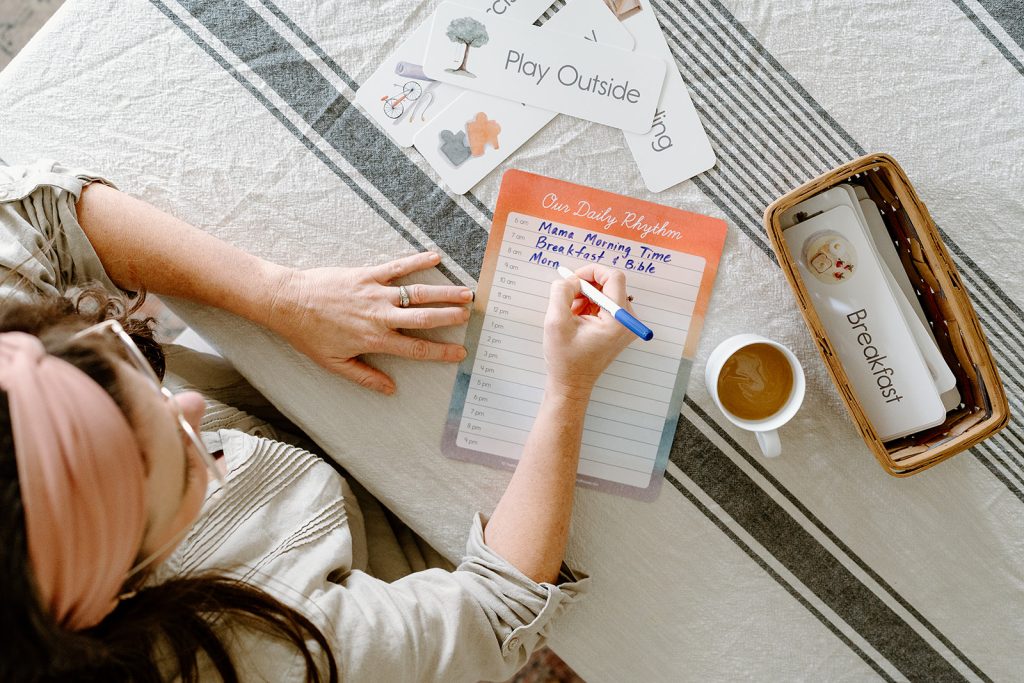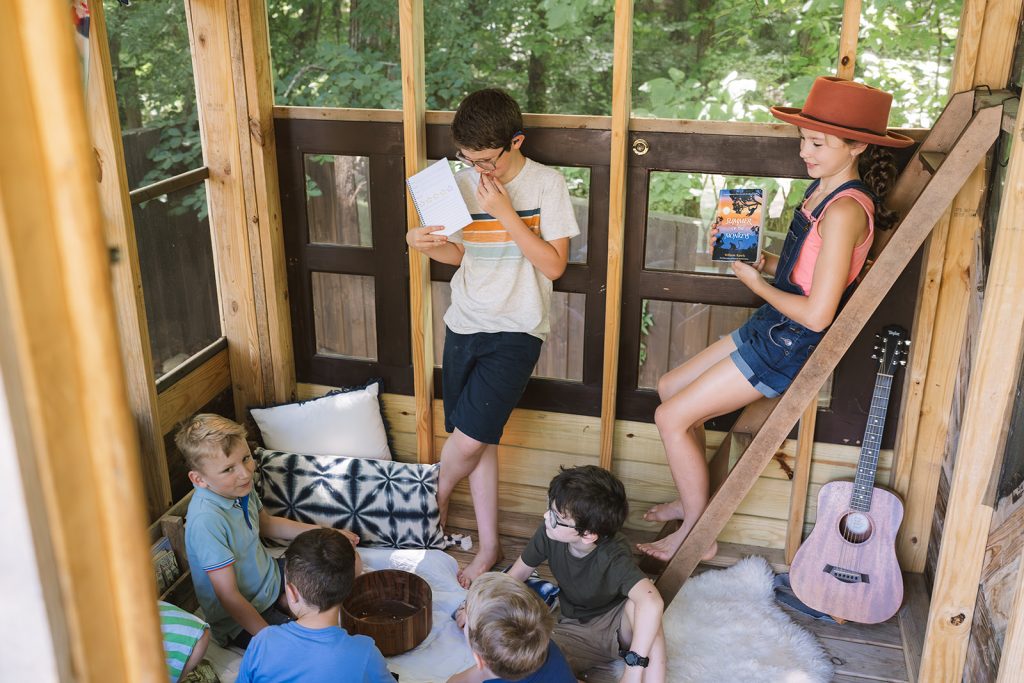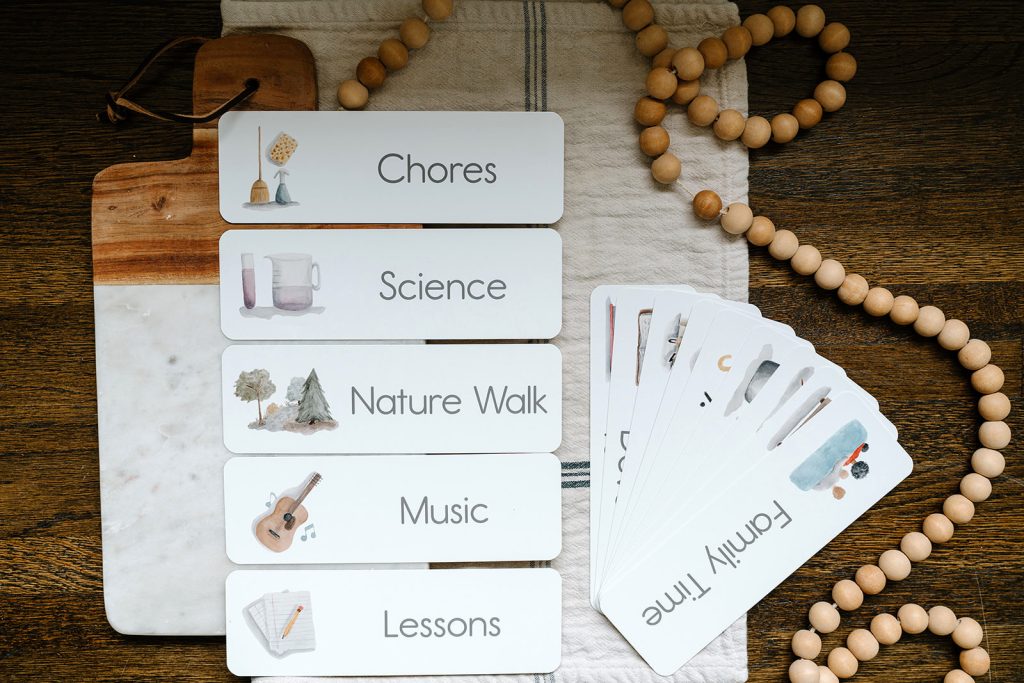When I began my homeschooling journey with two preschool-aged children, I initially attempted to recreate a traditional classroom at home, complete with workbooks, schedules, and the expectation that my young children would sit still. However, I quickly realized that this approach didn’t align with what my preschool-aged children truly needed or honestly, with my core values of early childhood education.
I discovered that I wanted their earliest education to be filled with rich stories, music, play, wonder, movement, nature exploration, and abundant opportunities to learn real-life skills alongside me. Learning about the world around them, as well as the alphabet and numbers, could be gentle, playful, and hands-on, seamlessly integrated into everyday activities. Having guided four children through the preschool years, I have refined my understanding of what truly matters during these foundational early years.
Before diving too deep into details and planning, let’s address something important. Preschool is often viewed as the first step in a child’s educational journey. To some, preschool can feel daunting and full of pressure to reach certain milestones. Let me put you at ease if you’re new to this: Homeschool preschool should be seen as an opportunity to nurture curiosity and to begin laying a foundation for future learning. Let go of the pressure and enjoy these fleeting moments with your young child. Your job is to spread an array of opportunities for your child to fall in love with stories, be introduced to numbers and letters, to learn daily life skills by your side, and to explore the world around them.
In this blog post:
- How to create a homeschool preschool daily rhythm
- Setting the home atmosphere for homeschool preschool
- What to focus on during the years of homeschool preschool
- Creating a homeschool community in the early years
- Favorite books and curriculum for homeschool preschool
How to create a homeschool preschool daily rhythm

As you think about creating your ideal daily homeschool preschool schedule, the idea is not to create a rigid, structured day to accomplish all of your tasks and priorities. Instead, these schedules are designed to instill a predictable routine that helps your days flow smoothly while meeting your personal family goals and responsibilities.
Consider your personal responsibilities, goals for your child, your child’s daily routines and temperament, plus how your weeks are structured. Once you are in a solid rhythm, you will find that learning with your child is a habit you have formed together.
Take this quiz to help build a custom preschool rhythm for you and your child.
Once you settle on the best structure for you and your family, I recommend using Daily Rhythm Cards to create a visual schedule. A visual schedule helps instill a rhythm for the day and teaches children what to expect, even though it will often change. Even though routines will change with the seasons, as your child grows, and as priorities shift, having a template for the daily helps families move easily throughout the day with an idea of what to do each day.
Setting the home atmosphere for homeschool preschool

Whether or not you have a dedicated homeschool room, prepare for homeschool preschool by taking the time to create spaces in your home to encourage connection and learning.
These are my favorite spaces to set up for homeschooling:
- Reading spaces – Create reading spaces in your home to prepare for this time of learning together in books and literature. Consider making a cozy reading area with an extra blanket to snuggle as you read, or setting up a rug and pillows where you can gather your children together to read. Set up book baskets where you can rotate in new picture books as needed, and book shelves where you can create little libraries.
- Creative spaces – If you plan to do crafts and hands-on projects with your child, set up the space as much as possible to make setting up and clean up easy. This could be at a space like your kitchen table, with art supplies handy in bins and boxes. Or, it could be on your back porch where you don’t mind the mess. Stock up on paints and craft supplies to encourage creativity as you learn.
- Learning in the kitchen – Make your kitchen accessible for your children, even if they are little. Add a step stool or invest in a kitchen helper, get a child-sized apron, child-friendly knives, and an extra whisk or vegetable peeler. You will be surprised at how much your children can help with if you let them in, plus you create so many memories together.
- Homeschool supplies – Prepare for all kinds of learning as you set up your homeschool space. Having a reliable printer, printer, and supplies for each subject will let you up for a season of learning together with your child.
What to prioritize during the years of homeschool preschool

When I first began homeschooling preschool, I admit I was swept up in the traditional imagery of early education. I was tempted to decorate my house like a vibrant preschool classroom, complete with alphabet posters and number lines, and immediately dive into teaching reading and writing. The thought of formal lessons, structured activities, and measurable academic progress was, at first, a strong pull.
However, as I delved deeper into the world of early childhood education and homeschooling philosophies, I encountered a wealth of inspiring information that resonated deeply with me. I read extensively about the benefits of delaying formal academics and the profound impact of a more child-led, play-based approach in the foundational years. This research, coupled with observing my own children’s natural curiosity and developmental pace, led me to an early decision not to push academics in the tender early years. Our home wouldn’t be a mini-classroom designed for rote learning; instead, it would be a nurturing environment where genuine learning could blossom organically.
In these precious years of early education, my focus has deliberately shifted away from textbooks and worksheets towards fostering a love of learning through rich, immersive experiences. Our days are intentionally built around five core pillars that I believe lay the strongest groundwork for future growth: I focus on exposing children to living literature, encouraging unstructured play, training through connection, learning practical life skills, and spending time in nature.
During these years, my goal is to set a foundation for learning that adds beauty and depth to their lives, not just accelerating and advancing knowledge and academics.
Creating a homeschool community in the early years

Beyond the walls of our home, I’ve also learned the immense value of cultivating a supportive homeschool community. While our days are rich with family-centered learning, homeschooling doesn’t have to be something you do alone. In fact, connecting with other homeschooling families has been instrumental in providing encouragement, shared resources, and a vital sense of belonging for both myself and my children. In community, we find understanding, inspiration, and a broader network of learning opportunities.
Creating this community often starts with reaching out. For us, this meant exploring local co-ops, online forums, and social media groups dedicated to homeschooling. Initially, it might feel a little like dipping your toe in the water, but showing up to a park day, attending a field trip organized by another family, or even just participating in online discussions can be the first step towards forging genuine friendships. These relationships not only offer practical advice on curriculum choices or navigating challenging phases but also provide invaluable emotional support – a shared knowing look when discussing the joys and unique challenges of this lifestyle.
The beauty of a strong homeschool community lies in its diversity and the collaborative spirit it fosters. We’ve participated in everything from informal park meet-ups where children freely play and parents chat, to more structured learning opportunities like book clubs, science fairs, or even talent shows organized by a group. These shared experiences enrich our children’s lives by exposing them to different personalities and perspectives, teaching them social skills in various settings, and often sparking new interests through interaction with their peers. Building a community early on can be something you reap the rewards of for years to come.
Favorite books and curriculum for homeschool preschool
Once you have decided what you will prioritize during this time with your child, here are some of my favorite resources for the preschool years.
Treehouse Story School: Preschool

Treehouse Story School: Preschool is 32-weeks of gentle, literature-based curriculum designed for ages 2.5-5 years. This preschool curriculum that invites children to learn through the themes in stories they love. Each week will focus on a picture book, inviting children into connection and learning through music and movement, play-based narration, alphabet and number play, motor skills, practical life development, crafts, and baking together.
It would be a great fit for your toddler or preschooler if you are looking to incorporate multi-sensory, play-based learning while introducing them to timeless stories.
From toddler through upper preschool, this curriculum can be used year after year as you dive deeper into beloved, classic stories your family will cherish. Preview a free week here.
Daily Rhythm Bundle

Children are highly visual–they can feel particularly out of control when they don’t know what to expect of their day. That’s why we recommend using a visual schedule to support your children from the time they are very young.
Rather than trying to stick to a rigid schedule, this set helps you create a general rhythm for your days. The daily rhythm worksheet is laminated and dry erase and the cards can be moved around offering you flexibility and adaptability.
Morning Time Bundle

This interactive, reusable set focuses on weather, seasons, moon phase, temperature, weather-appropriate clothing, date and time, and reading a calendar. With this daily bundle, your child will practice the skills of handwriting, tracing, copywork, and telling time. I recommend you print these materials and place them inside of a Morning Time Menu or dry-erase sleeve. Using dry-erase markers, your child can fill this bundle out over and over again.
We also offer a version of the Morning Time Bundle for those in our community who live in the Southern Hemisphere.
Wonder of Nature Alphabet Print Cards

The Wonder of Nature Alphabet Print Cards were designed to offer young children a multi-sensory invitation to recognizing letters. The watercolor illustrations that coordinate with each letter of the alphabet teach early phonetic awareness by introducing them to beginning letter sounds. These beautiful cards can be displayed in your school room or used for hands-on learning activities like matching, sorting, and reading. See the full Wonder of Nature Collection here.

![Top Beginner Books for Kids [Free Beginner Readers Booklist]](https://storage.googleapis.com/treehouse-schoolhouse-media-dev/0da4584e-img_5406.jpg)

